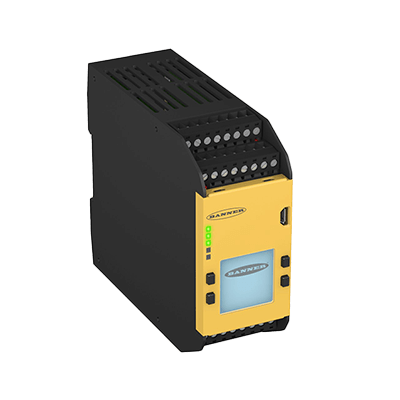What Is a Safety Control?

A safety control is a device that controls machine startup based on signals from safety input devices. When it detects behaviors such as malfunction or unintended human operation, it independently assesses the anomaly and subsequently deactivates the safety output. By doing so, the startup of the machine is stopped.
A safety control input includes safety plugs, laser sensors, and emergency stop switches.
Uses of Safety Controls
Safety controls are mainly used to construct systems that protect the safety of workers.
There are two types of safety controls: safety PLCs, which are capable of complex programming, and safety relay units, which are not programmable. Safety relay units are available with one set of inputs and one set of outputs, or with multiple inputs and outputs to build simple safety control circuits.
A safety PLC is suitable when you want to determine the operation limit by taking various conditions into account, while a safety relay unit is suitable when you want to determine the operation limit simply and immediately. In this way, it is important to use both according to the system you want to realize.
Principle of Safety Controls
Safety controls are electrically connected to safety plugs, laser sensors, and non-emergency stop switches on the input side. It is also electrically connected to the output devices in the same way.
The safety controls constantly monitor the electrical connections of the equipment on the input side. For example, an operation panel installed on a production line is equipped with an emergency stop switch. If a worker presses the emergency stop switch for any reason, it disrupts the electrical connection between the emergency stop switch and the safety controls. The safety controls then identify this interruption and promptly interrupt the electrical connection of the equipment on the output side (if a safety relay unit is employed). In this way, the output devices can be deactivated almost as soon as the emergency stop switch is pressed.
On the other hand, if a safety PLC is used, the output side operation is restricted according to the programmed process. Programming is highly flexible, and a variety of operations can be realized. However, in the case of applications where human casualties are to be prevented, the speed of the process is related to the magnitude of the damage, so the system must be carefully considered.